Molecular Gastronomy is a fascinating discipline in food technology that explores the science of food at a molecular level. It goes beyond traditional cooking methods and delves deep into scientific principles and avant-garde techniques. By understanding the molecular composition of ingredients, food technologists can control factors like texture, flavor, and viscosity, leading to precision and reproducibility in large-scale production.
This culinary approach also utilizes techniques such as spherification, foaming, and gelling to modify the texture of foods. Molecular Gastronomy offers opportunities for the creation of future foods, including plant-based alternatives and sustainable protein sources.
However, there are challenges to integrating Molecular Gastronomy into food technology, such as the need to balance innovation with practical considerations of large-scale production and cost-effectiveness. Collaboration between food scientists, technologists, and culinary experts is crucial for the future development of Molecular Gastronomy in shaping the future of food innovation.
The Role of Molecular Gastronomy in Food Technology

Molecular Gastronomy plays a significant role in food technology by revolutionizing our understanding and approach to food. It emphasizes precision and reproducibility by utilizing the molecular composition of ingredients to control texture, viscosity, and flavor, ensuring consistency in large-scale production.
One of the key aspects of Molecular Gastronomy is its ability to modify food texture using innovative techniques. By employing methods such as spherification, foaming, and gelling, food technologists can enhance the mouthfeel and create unique product experiences. These texture modification techniques contribute to the development of novel textures and greatly improve the overall quality of food products.
In addition to texture modification, Molecular Gastronomy introduces innovative ingredients into food production. Hydrocolloids, emulsifiers, and enzymes, commonly associated with this discipline, find extensive application in large-scale food production. These ingredients not only contribute to the development of novel textures but also improve the overall sensory experience of food.
Molecular Gastronomy also plays a crucial role in creating future foods. With its emphasis on precision and molecular control, it enables the development of plant-based alternatives with enhanced textures and sustainable protein sources. By leveraging innovative ingredients and techniques, food technologists can create food options that are not only delicious but also environmentally friendly.
However, integrating Molecular Gastronomy into food technology comes with its own set of challenges. Balancing innovation with practical considerations and maintaining cost-effectiveness poses significant hurdles. Overcoming these challenges requires collaboration and exploration among food scientists, technologists, and culinary experts. By working together, they can overcome the obstacles and drive the future of food innovation.
Molecular Gastronomy and Sustainable Food Production

With the increasing global challenge of sustainable food production, Molecular Gastronomy provides a toolkit for developing solutions. By optimizing ingredient functionality and minimizing waste, this discipline contributes to more sustainable practices in the food industry.
The precise control over ingredients and textures enables the development of innovative products that align with evolving consumer demands for sustainable and environmentally friendly options. By incorporating Molecular Gastronomy techniques and ingredients in food technology, we can reduce the environmental impact of food production and pave the way for a more sustainable future.
The Fascinating Techniques of Molecular Gastronomy
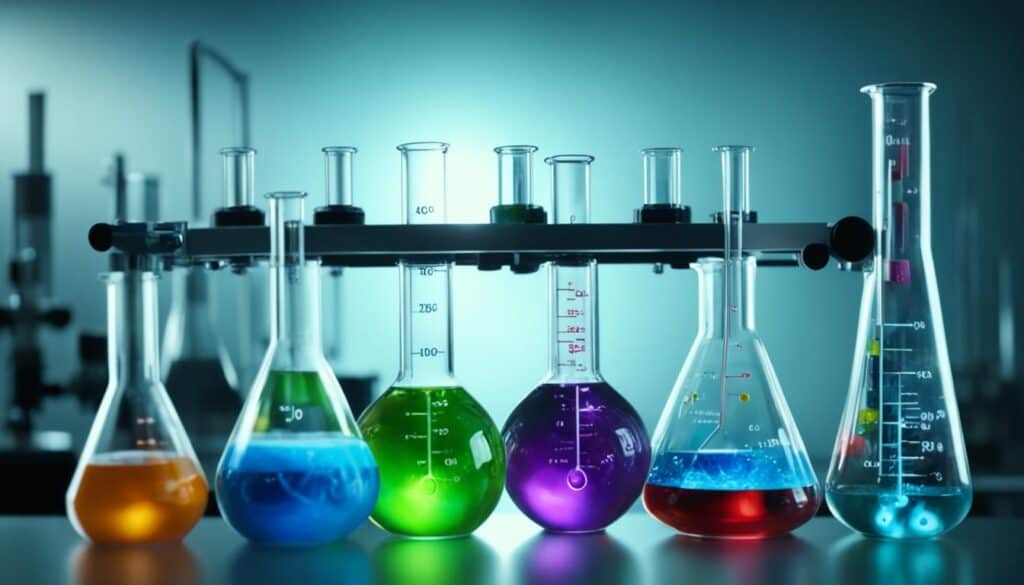
Molecular Gastronomy incorporates a range of captivating techniques that revolutionize the presentation and sensory experience of food. These techniques enable chefs and food enthusiasts to create dishes with unique textures and shapes, enhancing the overall dining experience without compromising taste.
One of the notable techniques in Molecular Gastronomy is spherification. This process involves transforming liquid ingredients into delicate spheres by encapsulating them in a tasteless membrane. The result is visually striking and provides an exciting burst of flavors when consumed.
Another technique that has gained popularity is sous-vide, a French term meaning ‘under vacuum.’ This cooking technique involves placing ingredients in a sealed bag and submerging them in water, cooking them at a low and precise temperature. This method enhances the juiciness, tenderness, and flavor of various foods, resulting in exquisite dishes.
Additionally, gelification is a technique used in Molecular Gastronomy to transform liquids into gelatinous forms. Gelling agents like agar-agar, gellan gum, and carrageenan are utilized to create unique textures and shapes, adding depth and visual appeal to culinary creations.
These fascinating techniques of Molecular Gastronomy empower chefs to push the boundaries of traditional cooking, unlocking a world of culinary possibilities. By introducing innovative textures and shapes, they elevate the dining experience, surprising and delighting the senses.
Exploring the Boundaries of Taste and Texture
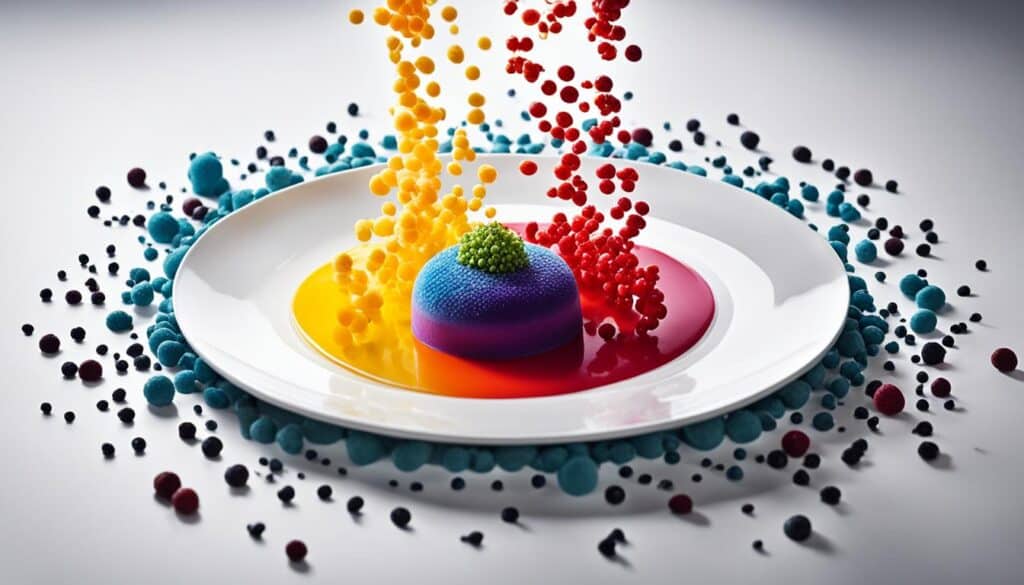
Molecular Gastronomy pushes the boundaries of taste and texture, creating a truly immersive sensory experience. By understanding the science behind flavors and textures, food technologists can manipulate ingredients to intensify certain flavor profiles, create interesting textural contrasts, and surprise the palate. This enables the development of unique culinary experiences that engage and delight the senses, transforming eating into a multisensory adventure.
When it comes to taste, Molecular Gastronomy allows for the precise control over flavor components. Chefs can dissect and reconstruct familiar flavors, creating unexpected combinations that challenge the taste buds. By harnessing the power of scientific principles, they can unlock the hidden potential of ingredients, enhancing their natural flavors and creating exciting sensory journeys.
Texture is another aspect that Molecular Gastronomy explores in-depth. By manipulating the physical properties of ingredients, chefs can create textural contrasts, such as combining crispy and creamy elements in a single dish. From airy foams to smooth gels, Molecular Gastronomy opens up a world of possibilities for creating innovative and captivating textures.
Through the interplay of taste and texture, Molecular Gastronomy transforms the act of eating into a multisensory adventure. Diners are not only treated to delicious flavors but also to a visually stunning and texturally engaging presentation. Each bite becomes a sensory exploration, combining the science of food with the art of culinary craftsmanship.
Molecular Gastronomy in High-End Dining
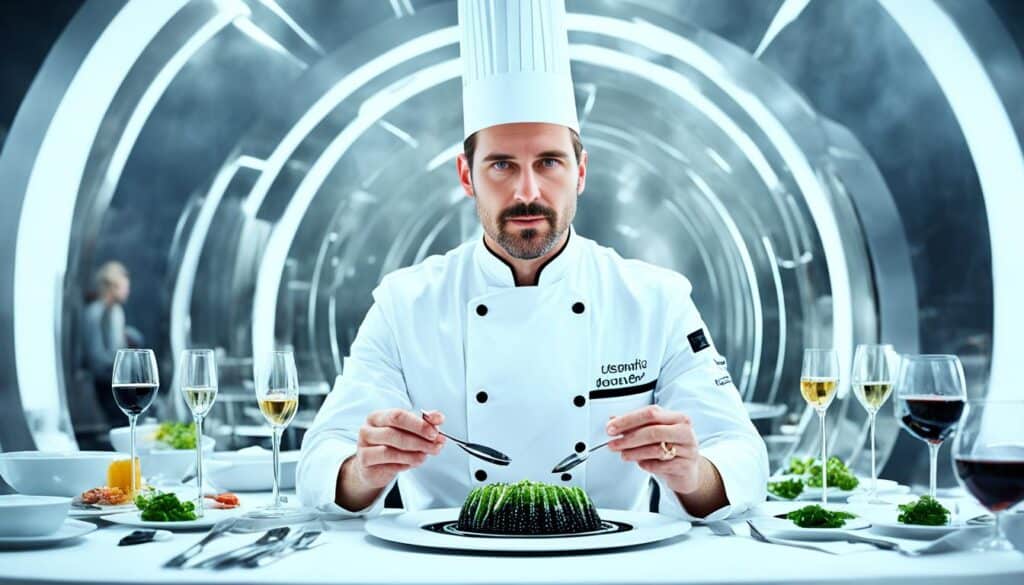
Traditionally, Molecular Gastronomy has been associated with high-end dining establishments, where avant-garde techniques and scientific principles are employed to create visually stunning and innovative dishes. Chefs in these establishments push the boundaries of culinary artistry, using Molecular Gastronomy techniques to experiment with textures, flavors, and presentations that challenge traditional norms.
By incorporating Molecular Gastronomy, chefs can explore new dimensions of taste and visual appeal, creating a dining experience that goes beyond the ordinary. These avant-garde techniques not only elevate the overall dining experience but also showcase the intersection between science and art in the world of gastronomy.
The use of molecular gastronomy in high-end dining allows for unparalleled creativity, enabling chefs to transform ingredients into extraordinary culinary masterpieces. By leveraging scientific principles and avant-garde techniques, these establishments offer diners a unique and immersive gastronomic journey that combines innovation, precision, and artistry.
With the integration of molecular gastronomy, dishes become more than just a meal – they become edible works of art, delighting both the palate and the senses. The incorporation of molecular gastronomy techniques has revolutionized high-end dining, attracting food enthusiasts and professionals alike.
Image source:
The Science Behind Molecular Gastronomy
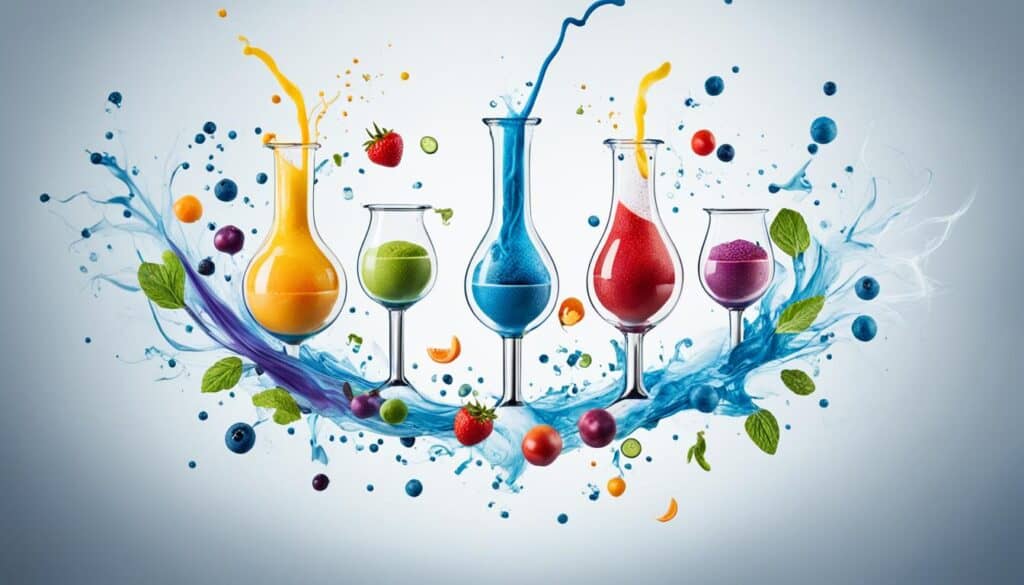
Molecular Gastronomy, at its core, is a discipline rooted in the science of food. It seeks to understand and transform the culinary experience through the application of scientific principles and techniques. By delving deep into the molecular composition of ingredients, Molecular Gastronomy explores how different cooking techniques and processes influence the flavors, textures, and overall sensory perception of food.
Through this scientific approach, chefs and food technologists can gain precise control over the cooking process, leading to the creation of innovative culinary creations and unforgettable dining experiences. By understanding the science behind the food we consume, we can harness the power of scientific principles to achieve remarkable results in the kitchen.
From the molecular interactions between ingredients to the chemical reactions that occur during cooking, every aspect of the culinary journey is dissected and explored. This scientific understanding enables chefs to optimize flavors, create unique textures, and present dishes in ways that challenge traditional culinary norms.
Molecular Gastronomy has brought forth a wide range of techniques and innovations that have revolutionized the culinary landscape. From the creation of foams and gels to the manipulation of flavors through the use of unexpected ingredients, chefs are able to push boundaries and create culinary experiences that delight and surprise diners.
The image above showcases the intricate nature of Molecular Gastronomy, highlighting the scientific principles and techniques that underpin this field of culinary exploration.
By embracing the science of food, chefs and home cooks alike can unlock a world of culinary possibilities. The applications of Molecular Gastronomy extend beyond high-end dining establishments, offering a new perspective and approach to everyday cooking. Whether it’s experimenting with textures, intensifying flavors, or presenting dishes in innovative ways, the science behind Molecular Gastronomy holds tremendous potential for culinary enthusiasts at all levels.
As we continue to explore the science of food, the future of Molecular Gastronomy looks promising. With advancements in technology, increased collaboration among food professionals, and a greater understanding of the molecular intricacies of ingredients, we can expect even more exciting innovations and groundbreaking culinary experiences to emerge.
The Impact of Molecular Gastronomy on Food Innovation
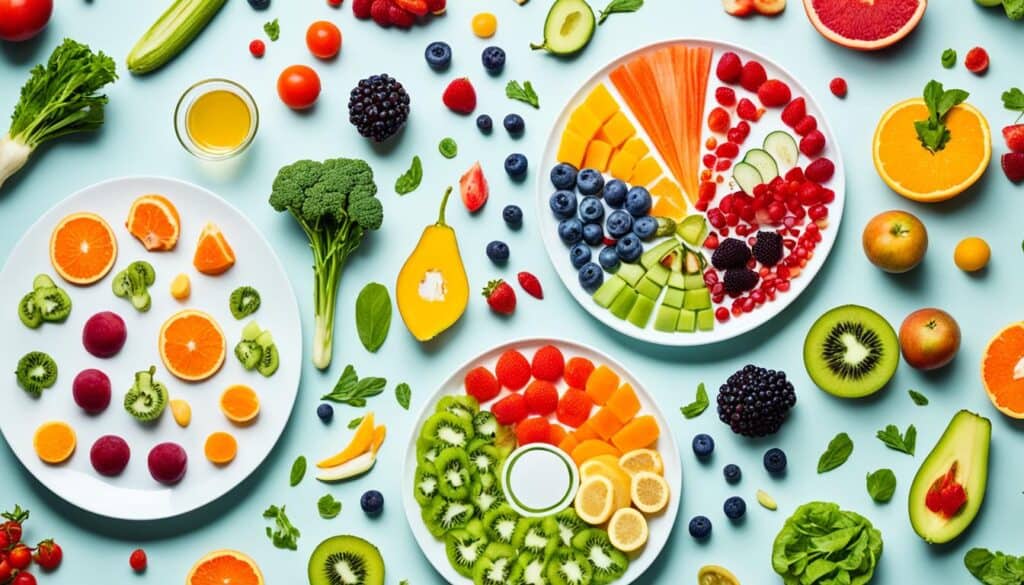
Molecular Gastronomy has revolutionized food innovation by driving the development of new culinary techniques, ingredients, and products that challenge traditional norms and excite consumer palates. Through the integration of molecular gastronomy in food technology, food scientists, technologists, and culinary experts collaborate to exchange insights, knowledge, and the latest advancements in the field.
This collaborative environment fosters continuous experimentation and progress in food innovation. By combining scientific understanding with culinary expertise, this interdisciplinary collaboration pushes the boundaries of what is possible in the world of food, leading to breakthroughs in flavor profiles, texture modification, and presentation.
The knowledge and techniques discovered through molecular gastronomy have opened up a world of creative possibilities in the food industry. From the use of hydrocolloids to create unique textures to the exploration of innovative ingredients, such as liquid nitrogen for freezing, molecular gastronomy has expanded the culinary landscape.
Furthermore, the integration of molecular gastronomy in food technology has enabled the creation of new products that cater to evolving consumer demands. Plant-based alternatives with enhanced textures, sustainable protein sources, and innovative flavor combinations are just a few examples of how molecular gastronomy is shaping the future of food.
In the image above, you can see a glimpse of the creative and innovative dishes that have emerged from the collaboration between molecular gastronomy and food innovation. The combination of scientific principles and artistic presentation has resulted in visually stunning and memorable dining experiences.
As collaboration continues to flourish in the realm of molecular gastronomy, we can expect even more exciting developments in the future. The exchange of insights and the exploration of new possibilities will continue to drive food innovation, providing an endless array of culinary delights for food enthusiasts around the world.
Consumer Perspectives on Molecular Gastronomy
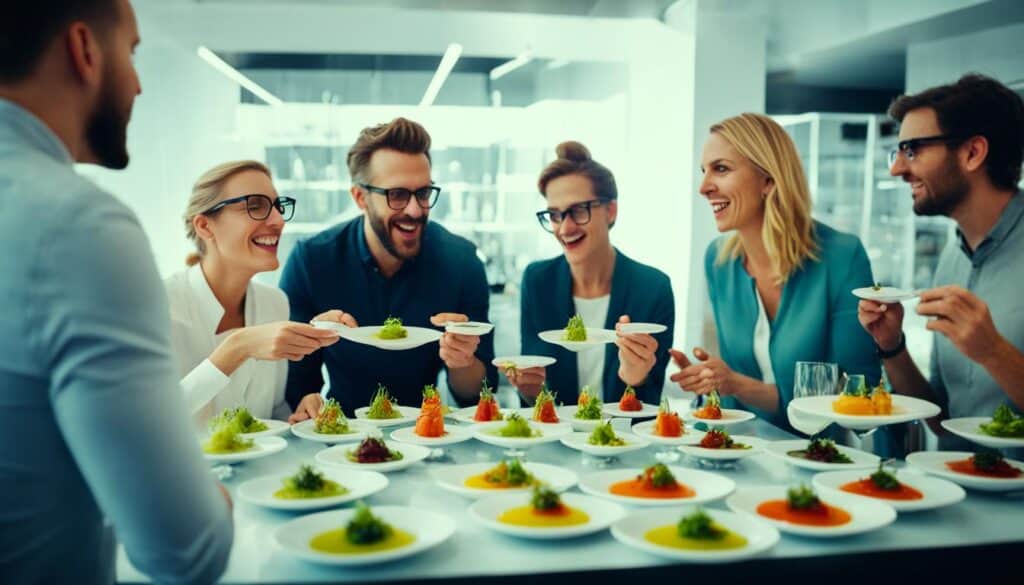
Molecular Gastronomy has captivated the palates and imaginations of consumers who seek unique dining experiences. Food enthusiasts and curious diners are drawn to the innovative techniques and creative presentations offered by Molecular Gastronomy-inspired establishments. The ability to experience new textures, flavors, and sensory surprises makes dining at these establishments a memorable and immersive experience.
At the intersection of science and culinary arts, Molecular Gastronomy brings a sense of wonder and excitement to the dining table. Consumers are intrigued by the visually stunning dishes, unexpected combinations, and playful presentations that challenge traditional notions of food. Molecular Gastronomy offers a departure from conventional dining, transporting diners into a world where science and creativity converge.
The focus on precision and artistry in Molecular Gastronomy creates an engaging and interactive dining experience. Watching chefs skillfully execute techniques like spherification or gelification sparks curiosity and adds an element of theater to the meal. The use of innovative ingredients and culinary techniques results in dishes that tantalize the taste buds and ignite the senses.
Additionally, dining at a Molecular Gastronomy-inspired restaurant offers consumers a sense of exclusivity and being part of something cutting-edge. These unique dining experiences become memorable moments that are shared with friends, family, and on social media, creating a sense of anticipation and excitement among food enthusiasts.
As consumers become more adventurous in their culinary explorations, Molecular Gastronomy continues to be a popular choice. The endless possibilities for taste, texture, and presentation offered by this innovative approach to cooking make it a compelling and sought-after dining experience.
Image:
The Potential for Molecular Gastronomy in Everyday Cooking

While Molecular Gastronomy is often associated with high-end dining, there is potential for its principles and techniques to be applied in everyday cooking. Home cooks who are passionate about culinary experimentation can explore Molecular Gastronomy techniques to elevate their dishes and create unique experiences in their own kitchens. With a basic understanding of the science behind food, amateur chefs can experiment with textures, flavors, and presentations to add a touch of avant-garde to their everyday meals.
- Discover new cooking techniques: Molecular Gastronomy offers home cooks the opportunity to try out innovative cooking techniques like spherification, sous-vide, and gelification, which can add a new dimension to their culinary repertoire.
- Explore flavor combinations: By experimenting with Molecular Gastronomy techniques, home cooks can combine flavors in unique ways, creating unexpected and delightful taste profiles.
- Play with textures: Molecular Gastronomy allows amateur chefs to manipulate textures, transforming traditional dishes into visually appealing and sensorially captivating creations.
- Enhance presentation: With Molecular Gastronomy techniques, home cooks can elevate the visual presentation of their dishes, making them not only delicious but also visually stunning.
- Impress your guests: By incorporating Molecular Gastronomy techniques into everyday cooking, home cooks can surprise and impress their guests with dishes that showcase their creativity and culinary prowess.
Molecular Gastronomy is not limited to professional kitchens. With a passion for culinary experimentation and a willingness to embrace the science behind food, home cooks can unlock the potential of Molecular Gastronomy in their everyday cooking, creating memorable dining experiences right in their own homes.
Beyond the Kitchen – Molecular Gastronomy in Other Industries

Molecular Gastronomy’s influence extends beyond the realm of food. Its principles and techniques have found applications in other industries such as cosmetics, perfumery, and mixology. The cross-disciplinary approach to innovation and the manipulation of ingredients have inspired creative solutions and new experiences in these industries. This demonstrates the broad impact and potential of Molecular Gastronomy in various fields.
Just as Molecular Gastronomy has transformed the way we approach food, it has also sparked innovation in other sectors. The principles and techniques used in Molecular Gastronomy, such as manipulating textures, creating unique flavor combinations, and applying scientific principles to create visually stunning dishes, have found applications in industries beyond the kitchen.
One such industry is cosmetics, where the understanding of molecular interactions and ingredient functionality has led to the development of innovative skincare and beauty products. By leveraging the knowledge gained from Molecular Gastronomy, cosmetic scientists have been able to create products that deliver enhanced textures, improved sensory experiences, and novel formulations.
Perfumery is another field that has been influenced by Molecular Gastronomy. Just as flavors and textures are combined in creative ways to create unique dishes, perfumers have begun to explore innovative blends and combinations of scent molecules to create one-of-a-kind fragrances. The precise control over aroma compounds made possible by the principles of Molecular Gastronomy has opened up new possibilities for perfumers to craft captivating scents that evoke specific emotions and experiences.
Mixology, the art of crafting cocktails, has also seen a molecular revolution. Bartenders and mixologists are utilizing techniques and ingredients borrowed from Molecular Gastronomy to create innovative and visually stunning cocktails. By incorporating spheres, foams, and gels into their creations, mixologists can transform the way we experience our favorite libations, elevating the cocktail hour to new heights.
This cross-disciplinary application of Molecular Gastronomy demonstrates its versatility and potential to shape various industries. By recognizing the underlying science and principles behind Molecular Gastronomy, professionals in other fields can draw inspiration and unlock new possibilities for innovation and creativity.
As we continue to explore the boundaries of taste, texture, and presentation, Molecular Gastronomy’s influence will likely continue to extend into new industries. From fashion to product design, the principles and techniques of Molecular Gastronomy have the potential to reshape the way we think about and interact with the world around us. By embracing a cross-disciplinary approach and fostering collaboration between industries, we can unlock the full potential of Molecular Gastronomy to drive innovation and create unique experiences across a range of fields.
The Future of Molecular Gastronomy

The future of Molecular Gastronomy holds immense possibilities. As the field continues to evolve, advancements in technology, scientific research, and culinary techniques will shape the trajectory of this discipline. The integration of Molecular Gastronomy in food technology will drive the development of novel ingredients, techniques, and sustainable practices, paving the way for a future where the boundaries of taste, texture, and presentation are continually expanded.
Culinary Advancements
- Molecular Gastronomy in food technology – The integration of Molecular Gastronomy in food technology will lead to the development of new culinary techniques and innovative ingredients that push the boundaries of taste and texture.
- Novel ingredients – Molecular Gastronomy opens up possibilities for using unique and unconventional ingredients to create revolutionary dishes and flavor combinations.
- Technological advancements – The future of Molecular Gastronomy will be influenced by technological advancements in areas such as cooking equipment, food processing, and molecular analysis, enabling chefs and food technologists to further explore the possibilities of this discipline.
Pushing the Boundaries
- Texture and taste exploration – Molecular Gastronomy will continue to challenge traditional notions of texture and taste, with chefs and food scientists experimenting with new techniques to create exciting experiences for diners.
- Presentation and aesthetics – The future of Molecular Gastronomy will see the exploration of new presentation styles and visual aesthetics, transforming the way food is experienced.
- Cross-cultural fusion – The integration of Molecular Gastronomy techniques in various cuisines around the world will create unique flavor profiles and culinary fusions that break traditional boundaries.
The future of Molecular Gastronomy is bright, with potential advancements in technology, culinary techniques, and sustainable practices. As this field continues to evolve, it will play a pivotal role in shaping the future of food and culinary innovation.
Join the Molecular Gastronomy Movement
The Molecular Gastronomy movement thrives on collaboration and the sharing of insights and experiences. By fostering a collaborative environment, we can drive innovation and shape the future of food. Join the discussion on the exciting intersection of science, technology, and the future of food by sharing your thoughts and experiences with Molecular Gastronomy.
Collaboration is key to unlocking the full potential of Molecular Gastronomy. By leveraging the collective knowledge and expertise of food scientists, technologists, and culinary experts, we can push the boundaries of taste, texture, and presentation in the culinary arts.
Share your insights, experiments, and recipes with the Molecular Gastronomy community. Engage in discussions, ask questions, and learn from others who are passionate about this innovative discipline. Together, let’s explore the endless possibilities and shape the future of food.
To get started, leave your comments and ideas below. We look forward to collaborating with you and embarking on this exciting journey together!
Embracing the Science of Food – Understanding Molecular Gastronomy
To fully embrace the science of food and understand Molecular Gastronomy, it is essential to explore the techniques, principles, and applications of this innovative discipline. Molecular Gastronomy is a cutting-edge field that combines culinary arts with scientific principles to create unique and immersive dining experiences. By dissecting ingredients at a molecular level, food technologists can unlock endless possibilities in flavor, texture, and presentation.
Understanding Molecular Gastronomy opens up a world of creative experimentation and culinary advancement. It allows individuals to appreciate the intricate balance between science and artistry in the culinary realm. By delving into the science of food, aspiring chefs, food enthusiasts, and industry professionals can gain insights that drive the future of food innovation. From refining traditional recipes to developing novel gastronomic creations, Molecular Gastronomy offers a tantalizing frontier for culinary exploration.
The future of food lies in the hands of those who embrace the science of food and apply it to their culinary endeavors. Integrating Molecular Gastronomy into everyday cooking and high-end dining establishments will not only enhance the dining experience but also contribute to the evolution of sustainable food practices. As we continue to uncover the mysteries of food at a molecular level, we hold the key to shaping the future of gastronomy.
 Fullersears
Fullersears





